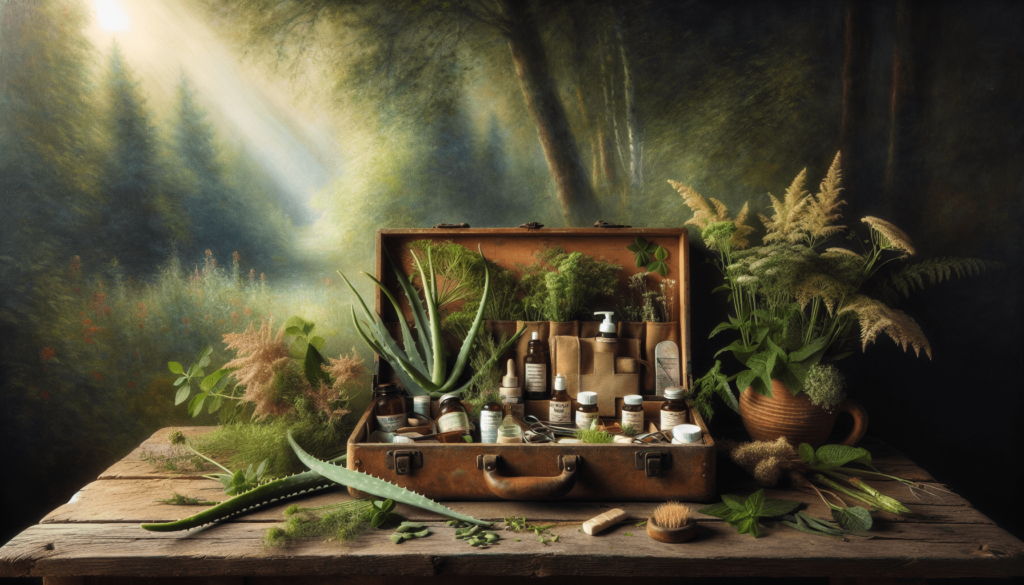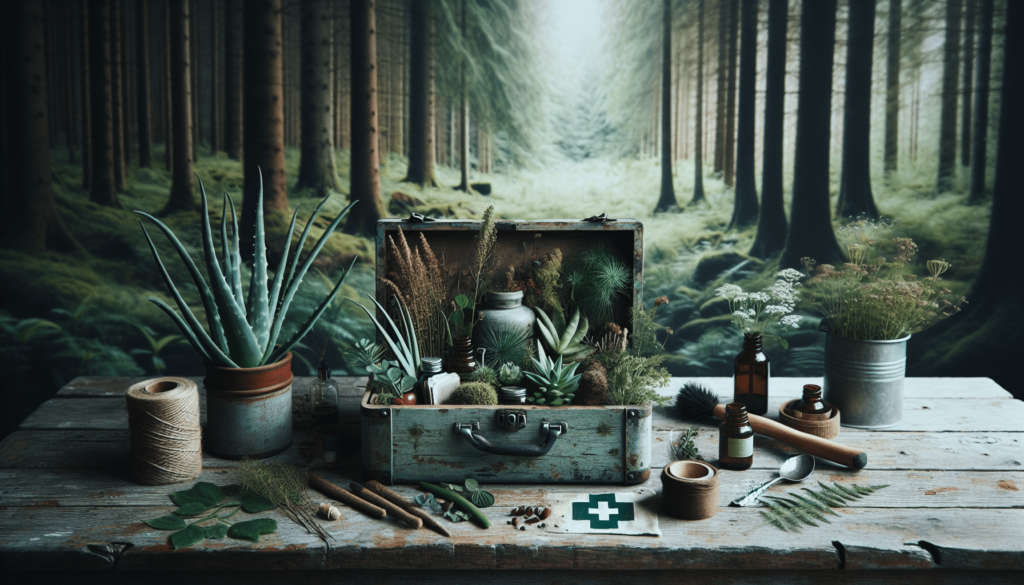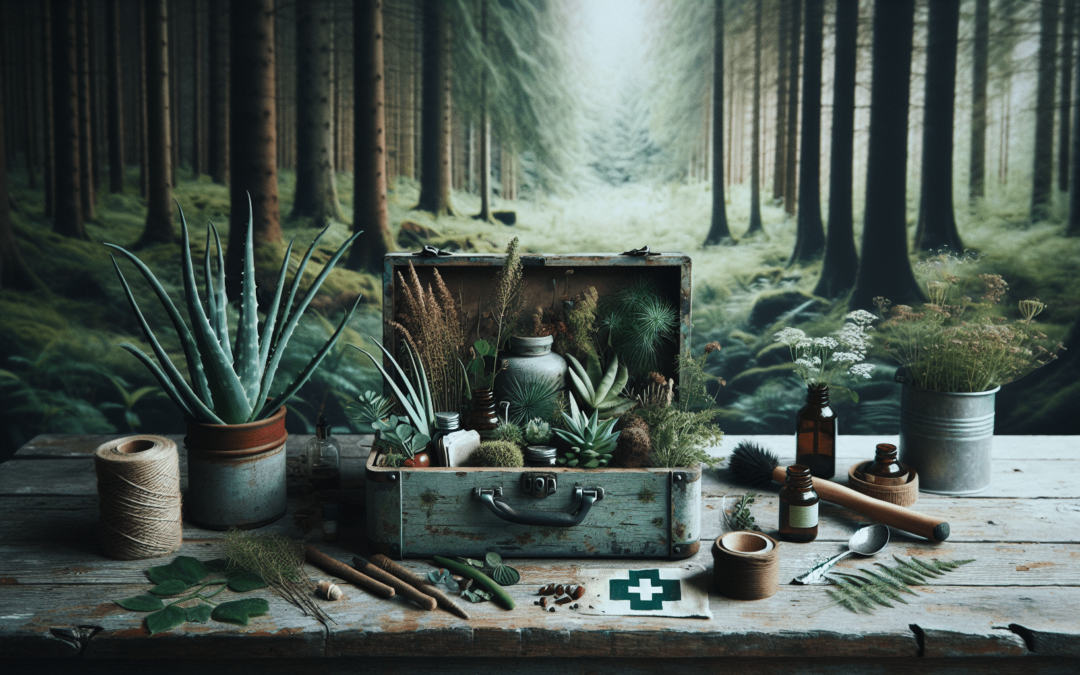Have you ever wondered what you would do in a situation where modern medical supplies aren’t available and you need to treat a minor injury or other common health issue? Creating your own natural first aid kit from wild plants can be not only a practical skill but also an empowering and deeply rewarding experience.
Introduction to Natural Remedies
When thinking about minor injuries and ailments, the first instinct might be to reach out for a commercial first aid kit. However, many people have relied on the healing properties of wild plants for centuries. These natural remedies offer a sustainable alternative to conventional products, connecting you to nature and its abundant gifts.
Natural remedies derived from plants can treat a range of issues, from cuts and wounds to burns and stomach aches. Knowing which plants to use and how to prepare them is key to making an effective natural first aid kit. Let’s embark on a journey to discover some of the most useful wild plants and how you can incorporate them into your own kit.
Benefits of Using Wild Plants in a First Aid Kit
Sustainability and Availability
One of the primary advantages of using wild plants is their availability. Unlike store-bought supplies, you can often find these plants in your backyard, local parks, or wilderness areas. This reduces dependency on industrial products and promotes a more sustainable lifestyle.
Natural Healing Properties
Wild plants contain various compounds that promote healing and health. These include antibacterial, anti-inflammatory, and analgesic properties, which can be highly effective for treating minor health concerns.
Cost-Effectiveness
Collecting wild plants is usually free, making it a cost-effective alternative. Additionally, homemade remedies don’t include potentially harmful additives or preservatives found in many commercial products.

Essential Wild Plants for Your Natural First Aid Kit
Plantain (Plantago major)
Plantain is a common weed and is often found in lawns and fields. It has impressive anti-inflammatory and wound-healing properties, making it an excellent addition to your first aid kit.
- Uses: Treats insect bites, cuts, and rashes.
- Preparation: Crush fresh leaves and apply directly to the affected area.
Yarrow (Achillea millefolium)
Yarrow is well-known for its ability to stop bleeding and promote wound healing. It can also reduce fever and act as a mild pain reliever.
- Uses: Stops bleeding, reduces fever, relieves minor pain.
- Preparation: Apply crushed leaves to wounds or brew as a tea for internal use.
Comfrey (Symphytum officinale)
Comfrey is often referred to as “knitbone” because it promotes the healing of bones and tissues. It’s extremely effective for treating bruises, sprains, and muscle injuries.
- Uses: Heals bruises, sprains, and muscle injuries.
- Preparation: Mash root into a paste and apply as a poultice.
Calendula (Calendula officinalis)
Calendula, or marigold, has notable antibacterial and anti-inflammatory properties. It helps heal cuts, burns, and skin irritations.
- Uses: Treats cuts, burns, and skin conditions.
- Preparation: Infuse flowers in oil to create a soothing salve.
Aloe Vera (Aloe barbadensis miller)
Aloe Vera is one of the most well-known plants for treating skin conditions. It’s excellent for burns, cuts, and various skin irritations due to its soothing and moisturizing properties.
- Uses: Heals burns, cuts, and skin irritations.
- Preparation: Apply fresh gel directly from the leaf to the affected area.
Witch Hazel (Hamamelis virginiana)
Witch hazel is a powerful astringent and anti-inflammatory plant, perfect for treating various skin conditions and reducing swelling.
- Uses: Reduces swelling, treats insect bites, and soothes minor irritation.
- Preparation: Use distilled witch hazel extract on a cotton pad and apply to the skin.
Arnica (Arnica montana)
Arnica is renowned for its ability to reduce bruising and swelling. It’s commonly used to treat sprains, sore muscles, and bruises.
- Uses: Reduces bruising and swelling, treats sprains.
- Preparation: Use an arnica-infused oil or cream on the affected area (avoid open wounds).
Harvesting and Preparing Wild Plants
Harvesting Tips
Knowing when and how to harvest your plants is crucial to maximizing their healing potential. Here are a few tips to help you:
- Timing: Harvest plants in the morning after the dew has evaporated and before the sun is too high.
- Identification: Properly identify plants to avoid mistakenly harvesting harmful ones.
- Sustainability: Only take what you need and leave behind enough plants to propagate.
Drying and Storing
Properly drying and storing your plants ensure they retain their medicinal properties.
Drying
- Air Drying: Hang plants upside down in a warm, dry, and well-ventilated area.
- Dehydrator: Use a food dehydrator on the lowest setting if air drying isn’t feasible.
Storing
- Storage Containers: Store dried plants in airtight glass containers away from sunlight.
- Labeling: Clearly label containers with the plant name and date of harvest.

Making Salves, Tinctures, and Infusions
Salves
Salves are easy to make and very effective for treating skin conditions. Here’s a basic recipe:
- Ingredients: 1 cup of infused herb oil, 1/4 cup of beeswax.
- Instructions:
- Melt the beeswax in a double boiler.
- Stir in the herb-infused oil.
- Pour the mixture into small jars and let it cool.
Tinctures
Tinctures are concentrated herbal extracts typically made using alcohol or vinegar. They are effective for internal use.
- Ingredients: Fresh or dried herbs, alcohol (vodka or brandy) or vinegar.
- Instructions:
- Fill a jar with herbs and cover them completely with alcohol or vinegar.
- Close the lid tightly and store in a dark place for 4-6 weeks, shaking occasionally.
- Strain and store in a dark glass bottle.
Infusions
Infusions are strong herbal teas that extract the medicinal properties of plants.
- Ingredients: Fresh or dried herbs, water.
- Instructions:
- Boil water and pour it over the herbs.
- Steep for at least 15 minutes.
- Strain and drink.
Creating Your First Aid Kit
Now that you have an understanding of the wild plants and their preparations, it’s time to assemble your natural first aid kit.
| Item | Purpose | Preparation |
|---|---|---|
| Plantain | Insect bites, cuts, rashes | Fresh leaves, poultice |
| Yarrow | Stops bleeding, reduces fever | Crushed leaves, tea |
| Comfrey | Heals bruises, sprains | Poultice |
| Calendula | Treats cuts, burns, skin irritations | Oil infusion |
| Aloe Vera | Soothes burns, cuts, skin irritations | Fresh gel |
| Witch Hazel | Reduces swelling, treats bites | Distillate on cotton pad |
| Arnica | Reduces bruising and swelling | Infused oil or cream (external use) |
Additional Supplies
To enhance your kit, consider adding the following items:
- Cotton balls and gauze: For application and wound care.
- Bandages and tape: For securing dressings.
- Tweezers and scissors: For precise applications and cutting gauze.
- Small jars and bottles: For storing your preparations.
- Labels: For clearly identifying contents and dates.
Using Your Natural First Aid Kit
Treating Common Injuries
It’s empowering to know how to use natural remedies to treat common injuries and ailments.
Cuts and Scrapes
- Cleanse: Use distilled witch hazel or an herbal infusion to clean the wound.
- Treat: Apply a plantain poultice or calendula oil to promote healing.
- Protect: Cover with gauze and secure with tape.
Burns
- Cool: Immediately cool the burn with cold water.
- Soothe: Apply fresh aloe vera gel to soothe the burn.
- Heal: Use calendula salve for further healing.
Insect Bites and Stings
- Calm: Apply crushed plantain leaves directly to the bite.
- Reduce: Use witch hazel extract to reduce swelling and discomfort.
Bruises and Sprains
- Rest: Elevate and rest the affected area.
- Reduce Swelling: Apply an arnica-infused oil or comfrey poultice.
- Repeat: Continue treatment until symptoms improve.
Learning and Expanding Your Knowledge
Books and Resources
To deepen your understanding, consider reading books on herbal medicine, such as:
- “The Herbal Medicine-Maker’s Handbook” by James Green.
- “Herbal Antibiotics” by Stephen Harrod Buhner.
- “Wild Remedies” by Rosalee de la Forêt and Emily Han.
Workshops and Community Classes
Check local listings for herbalism workshops and community classes to learn hands-on skills from experts and connect with like-minded individuals.
Online Courses
Many reputable websites offer online courses in herbalism. Some popular options include:
- The Herbal Academy
- Chestnut School of Herbal Medicine
- Learning Herbs
Conclusion
Assembling a natural first aid kit from wild plants is a practical and rewarding endeavor. Not only do you empower yourself with the knowledge to treat minor injuries and ailments, but you also foster a deeper connection with nature.
Understanding the properties of wild plants, how to harvest, prepare, and use them is integral to creating an effective natural first aid kit. With basic ingredients like plantain, yarrow, comfrey, and aloe vera, you can address various health issues sustainably and cost-effectively.
Remember, the more you practice and learn about herbal medicine, the more adept you will become. There is a wealth of knowledge out there waiting for you to discover. Your journey into natural remedies is just the beginning, and it can be immensely beneficial for your well-being and that of your loved ones.

